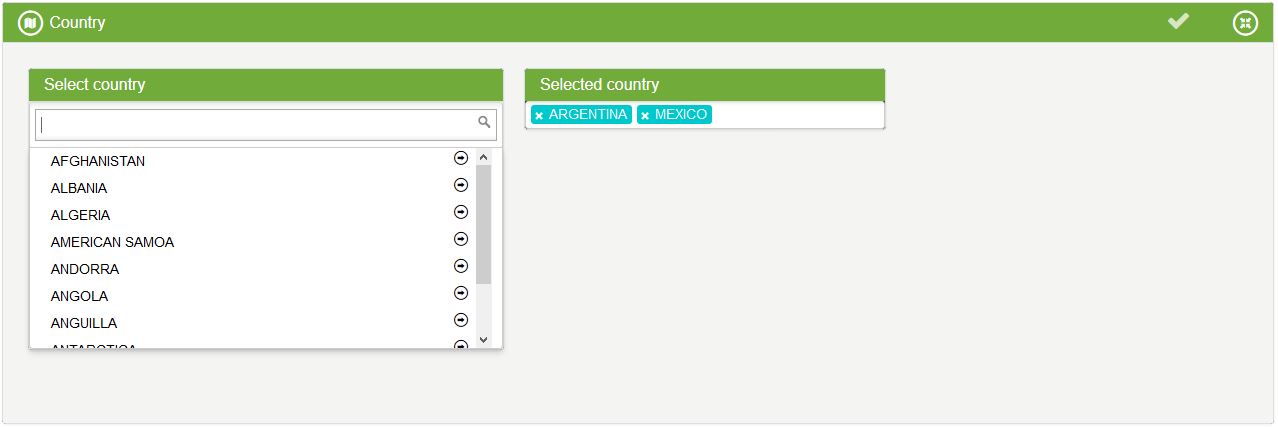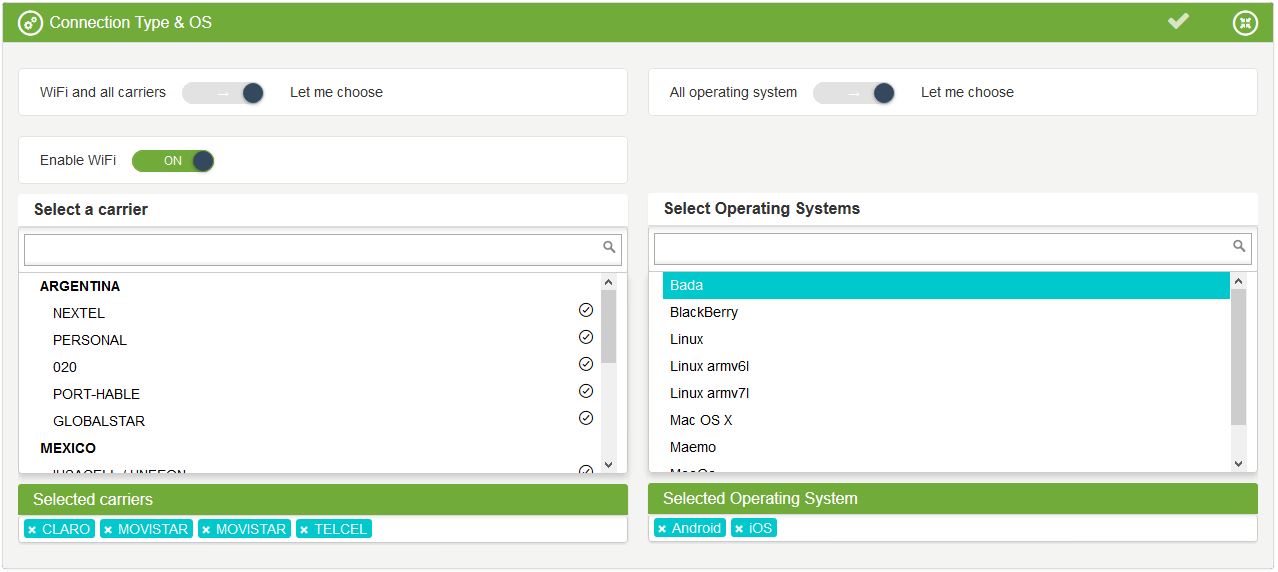First things first:
1. Add funds to your account
2. Top up your Advertiser’s Amount Bag. In Advertiser Management you will be able to assign funds to your Advertiser and create new ones associated to your account.
*Note for agencies. In Advertiser Management section, you can also set specific margins for each of your clients.
Create a new Offer
Before setting up and running your campaigns, you’ll need to create an offer. Offers serve as an instrument for grouping the campaigns of your products or services.
Grouping allows you to easily and quickly search in reports by the criteria you choose to group your campaigns, for instance: 1 Offer for all your US campaigns. Grouping is also where you want to define your generated clicks and where your campaign should be redirected.
1. Click Offers/Campaigns tab and select from the drop down menu Add Offer. Offers can also be created from Add Campaign banner as explained below.
2. Pick an Advertiser and Name your offer
3. Add the Landing page url and the macros that you will need. If you want to track conversions in the Bucksense report, add the {transaction_id} macro
4. Select the tracking method you will use, if you don’t want to track conversions in our Report, select None. To learn more about Tracking click here.
5. Set a Start date and an End date (optional) for your offer and Save. When you save your offer, you will see new sections available
6. Cap Settings Daily and/or Total for Impressions, Clicks and Budget can be added in the related fields
*In case you have more than one Tracking links or Landing Page URLs, you can add them in Additional URLs Section available once Offer details above have been saved. These additional URLs will allow you to create Landing Page Rotators and A/B Tests. Read How to Add an Offer article to learn more on these settings.

Set up a new campaign
Choose and set up the type of campaign that fits your marketing needs.
1. Click Offers/Campaigns Tab and select Add Campaign from the dropdown menu.
Name your campaign and select the offer that it belongs to
or create a new offer by selecting the advertiser from the drop down menu and by typing the LP url

Choose the Campaign Type: Native, Banner, Video, Ad Tag or Pop Under.
Based on the Campaign Type you have selected, select the Device Type, choose the Inventory (All Open RTB Ad Exchanges or Double Click Ad Exchange), the Type of Auction (Open Auction or Private Marketplaces)
2. Enter the Top Level Domain (primary level of your site URL ) and the Start Date.
Then choose the campaign’s URL type from one of the following three options:
- Landing Page URL: this is the default URL that you previously set up at the offer level
- Additional URLs: this is the list of additional URLs (landing pages, web pages, etc), which you previously added at the offer level
- A/B testing URL: a subset of URLs, taken from the additional URLs list, that will be rotated in the campaign
Impression tracking field (only available for banner campaigns) allows you to enter an url where you want to be notified every time an impression is delivered and your creative has been viewed by the user.
Impression tracking macros (see here) can be added to your impression tracking url to get additional informations.
The macros string will be replaced with a value when the ad is served to the user.
Then select the type of traffic source (for mobile campaigns): App and/or site and device type.
The Ad Position option allows you to set a specific target for the position of your ads.
First of all choose one of the 3 following options:
- Everything: select this option to palce your ads everywhere across the page
- Above the fold: select this option in case you want to place your ads on top on a page
- Below the fold: choose this option to place your ads at the bottom of a page. The users will need to scroll down the page to view your banners
Please note that the Ad Position option is only present on limited sizes within the inventory pool. Selecting the above or below the fold filter, will limit the campaign results.
Advanced App Supply Settings can be enabled for mobile campaigns:
- Traffic with Device IDs only (enabled by default): it allows you to target your mobile campaigns only on the Exchanges that provide inventory with the device ID.
This option is selected by default to ensure you high ad quality standard. Disable it if you want to reach higher volumes of traffic - Interstitial Only: enable this option if you only want interstitial banners running in your campaign
3. Click Country and select the country/countries where you want to run your campaign.
4. Click Connection Type & OS and select Let me Choose if you want to pick up specific Operating Systems and/or Carriers (for Mobile Campaigns). In case you do not wish to receive WiFi traffic, disable this option and select the specific carrier/s.
5. Click Creative and drop or select files to upload to your creatives (see here). If you have previously uploaded creatives for this advertiser, you can add them from here. Click on the Save all button to save your campaign creatives.
The audit status of your creatives will be shown by one of the following icons:
![]() Approved – creative has been approved and you can use it in your campaign
Approved – creative has been approved and you can use it in your campaign
![]() Refused – creative has been refused and cannot be used in your campaign
Refused – creative has been refused and cannot be used in your campaign
![]() Proposed – creative has been sent for audit
Proposed – creative has been sent for audit
![]() Unprocessed – creative has not yet been processed
Unprocessed – creative has not yet been processed
Creative previews show you information about dimension, weight and audit status.
Click on ![]() in the creative preview if you want remove that creative from your campaign.
in the creative preview if you want remove that creative from your campaign.
6. Click Budget & Spend Type and choose between Manual (Flat CPM) or Optimized (Dynamic CPM). Bucksense suggests that advertisers choose the Optimized option to let Bucksense Smart Algorithm automatically adjust campaign CPM to reach your goal.
OPTIMIZED: enter your Optimization Goal and choose your Type of Optimization (CPA/CPI or CPC).
Click on Customize Optimization Behaviour link to add your Optimization settings. In case you don’t add your Optimization settings, you will use Bucksense default ones (see in detail how to add the Bucksense Optimizer settings here)
Enter the Total Campaign Budget, choose your Budget Type (capped or unlimited), the Daily Cap and the Pace (spend as fast as possible or spend evenly throughout the day).
You can also set an Impression Cap and/or a Click Cap (Daily or Total):
- Impression Cap: This is the maximum number of Daily/Total ad impressions that can be served.
For example, if you set a Daily impression cap of 20,000 then no more than 20,000 impressions can be served per day.
Minimum value that can be set is 1000. - Click Cap: This defines the maximum number of Daily/Total clicks for your campaign.
For example, if you set a Total click cap of 5000, your campaign will not exceed this number.
Minimum value that can be set is 100.
The campaign will be paused as soon as a cap, for Impression and/or Click, have been delivered (if you set a total cap for both: Impressions and Clicks, the campaign will be paused when either one of the two reaches the total limit).
Please note that if you have set one or more caps (Impression, Click, Budget) at the Offer level, your campaign will be paused as soon as the lowest cap among those set is reached (see more about Offer caps here)
If you have chosen MANUAL, you will have to optimize your campaign manually and you would not be using our smart algorithm for optimization.
You need to set up: a CPM App/Site target, your Budget type (Capped or Unlimited), the Total Campaign Budget, a Daily Cap and the Pace (spend as fast as possible or spend evenly throughout the day).
You can also set a daily Impression Cap and/or Click Cap (see above).
Bucksense helps you to find an estimated CPM starting value by suggesting CPM values.
These suggested CPM values are available for both In-App and Site (depending on your campaign’s Supply Settings ).
These should be considered as “startup” values to access the auctions and are based on matching your campaign settings to the inventory data.
On the left side of the Budget & Spend Type section (only available for Manual spend type), you will find two very useful links: Impressions available and Opportunities.
The Impressions available tab provides a funnel chart showing how the available inventory decreases with the targeting settings you entered.
Opportunities tab is an useful chart to check once your campaign is live.
It gives you suggestions about how to increase your CPM in order to increase the number of auctions where your campaign can participate (bids opportunities).
Read more about these charts here
If you have set an End Date, you can enable the Daily Cap Adjustment in order to get an automatic adjustment of the campaign caps.
The daily cap is recalculated and it will be based on the total cap and the days missing.
If you want apply Microbidding rules, you have to click on Microbidding Settings button.
A pop-up window will appear, where you can set your own microbidding rules
For example: To set a different CPM for inventory on Mopub (Exchange), Android (OS), Samsung (Device Make) and Ace3 (Device Model), simply choose these options from the respective drop-down menu, set the desired CPM and click on ![]() to save
to save
Please note that if you set $0 CPM, you are excluding that rule.
If you want set a different CPM for placement, or, your rule includes a placement, you need to copy and paste it in the appropriate field.
If you already have set some rules and want to add more, you just need to click on the ‘Add Row’ button.
The ![]() button allows you to quickly search the microbidding rules you have created.
button allows you to quickly search the microbidding rules you have created.

Click on ![]() to download an excel file containing your microbidding rules.
to download an excel file containing your microbidding rules.
7. You are done! Now Click Activate to submit your campaign.
* For more targeting capabilities and campaign optimization options please go to the Advanced and Custom Targeting Sections.











